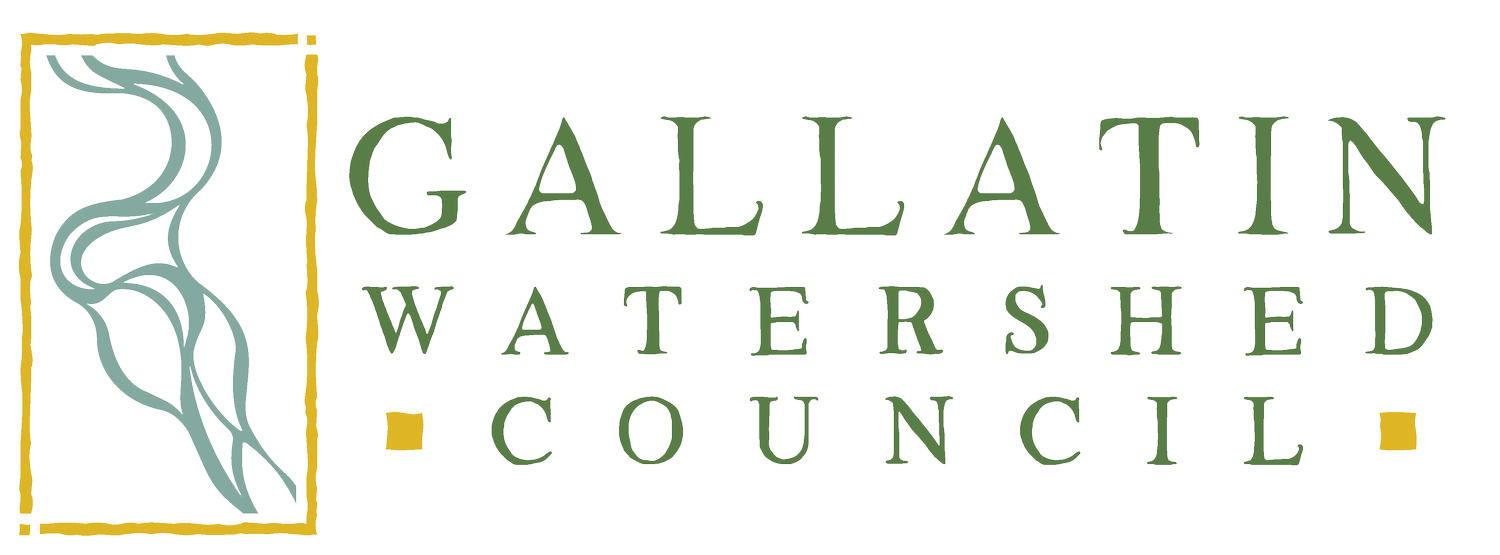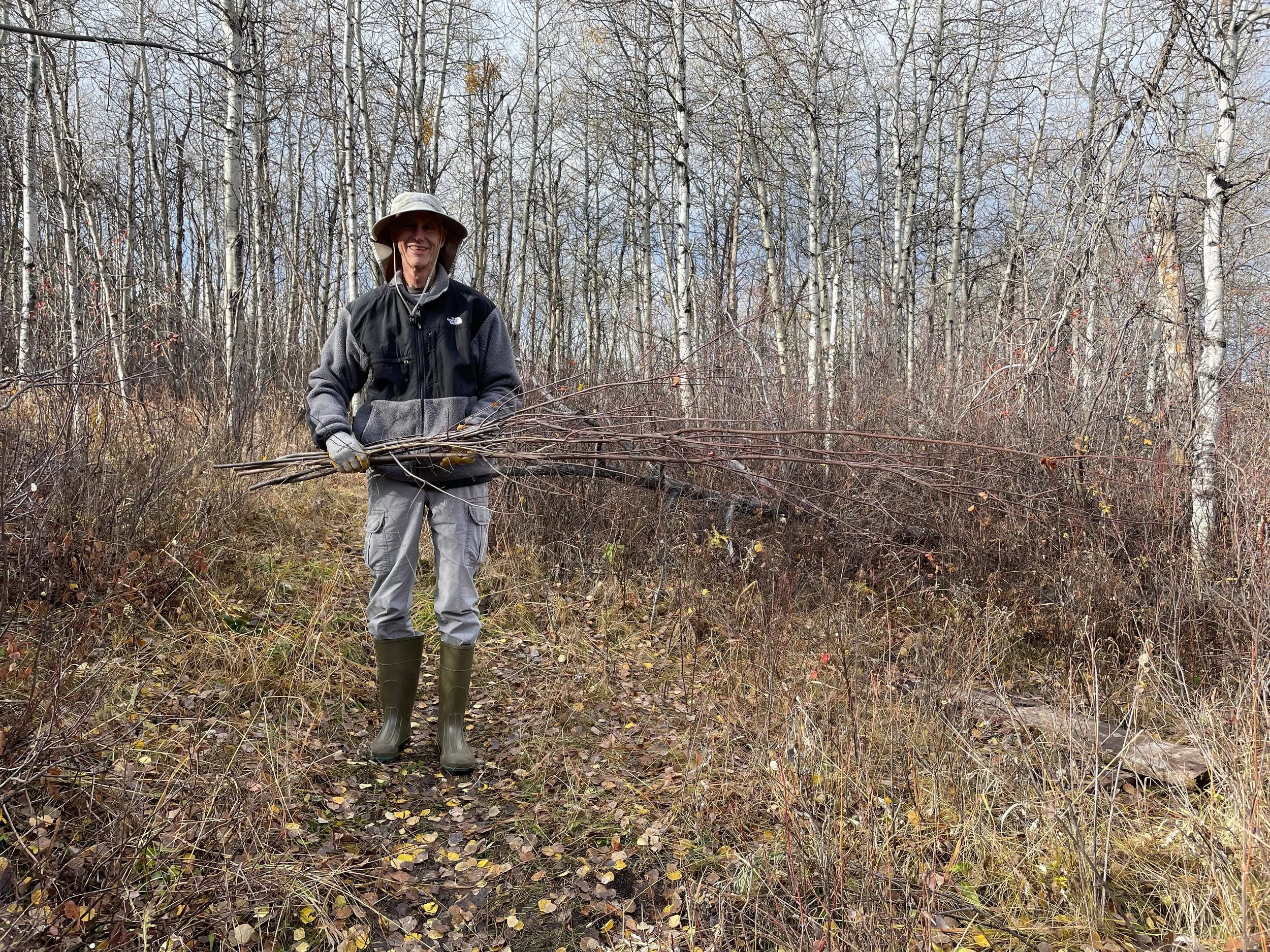Low Tech Restoration via Beaver Mimicry - Kelly Creek
Volunteer Ashley Martens weaves dogwood around BDA posts
The Gallatin Watershed Council completed its first beaver mimicry project last week along Kelly Creek, a tributary of the East Gallatin. Beaver mimicry is a form of low tech restoration that involves the construction of structures such as Beaver Dam Analogues (BDAs) and Post Assisted Log Structures (PALS) that mimic what beavers would create in their natural environment.
Beavers currently live downstream of the project site, and signs of beaver are prominent in the surrounding area. Aside from encouraging beavers backing into the landscape, this project had multiple objectives. First, the installation of BDAs and PALs will slow the baseflow of Kelly Creek, permitting storage of water for the later, drier months of summer. Additionally, the slowing of stream flow will sub-irrigate the floodplain, supporting riparian vegetation that stabilizes the streambanks. The healthy riparian vegetation will mitigate erosion, filter nutrients and sediments, and will assist in stable stream channel geomorphology.
Wetlands, which were previously limited to few low areas at the project site, are expected to increase in surface area at the sites near installation of habitat structures. If this new habitat looks appealing to beavers and they make their way back upstream, recolonization would dramatically increase aquatic and riparian habitat quality and wetland area and condition.
Aerial view of implemented structures on the Palmer Property
At the end of October, 17 volunteers banded together to build 9 structures on three separate reaches along Kelly Creek, including 3 BDAs and 6 PALS. In the following years, the IAWP Busy Beavers volunteer team will return to the project site to evaluate effectiveness of these structures, primarily through photo-point monitoring and instream habitat measurements.
Importantly, this project served as pilot for upcoming beaver mimicry projects within the Lower Gallatin Watershed, as we continue to address and eliminate our local waterways from DEQ’s list of impaired waterbodies. With the Lower Gallatin Watershed being DEQ’s next focus watershed for 2023, GWC aims to educate the community on low tech restoration processes such as beaver mimicry, and to mobilize volunteers of all ages and physical capabilities to advocate for their local watershed and to get their hands dirty in the process.
A workshop titled “Beavers and Conservation” led by ecologist Amy Chadwick was held on site prior to project construction, and similar workshops will be held again in the Spring of 2022. During BDA and PALS implementation in October, the volunteers ages 5 to 80 got to build the 9 structures made from on-site deadwood through many hours of sawing, sledging and weaving. Check out the pictures and the video below to see what the day looked like!
This project was funded by the Montana Watershed Coordination Council Watershed Fund and the Montana Department of Environmental Quality. Other partners include: Environmental Protection Agency, Americorps and Montana Conservation Corps, Sacajawea Audubon Society, and the Gallatin Valley Land Trust.















